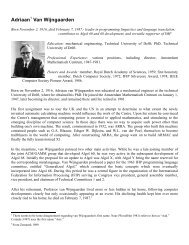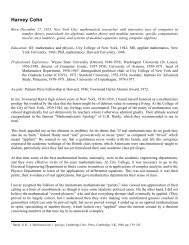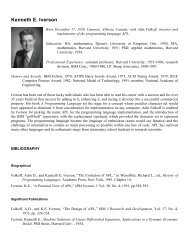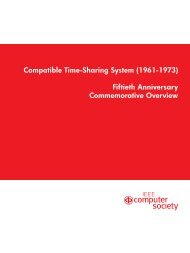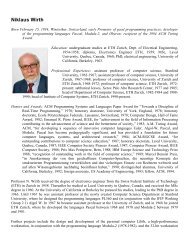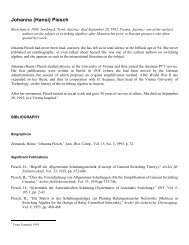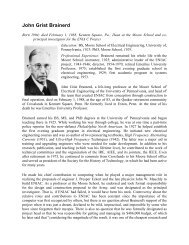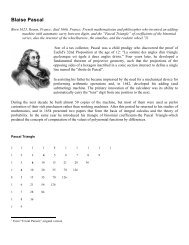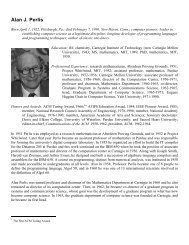L - Walden-family.com
L - Walden-family.com
L - Walden-family.com
You also want an ePaper? Increase the reach of your titles
YUMPU automatically turns print PDFs into web optimized ePapers that Google loves.
Bolt Beranek and Newman Inc.<br />
2.4 Routing Algorithm<br />
The routing algorithm directs each packet to its destination<br />
along a path for which the total estimated transit time is<br />
smallest. This path is not determined in advance. Instead, each<br />
IMP individually decides onto which of its output lines to<br />
transmit a packet addressed to another destination. This selection<br />
is made by a fast and simple table lookup procedure. For each<br />
~osslble<br />
destlnatlon, an entry ln the table designates the appropriate<br />
next le~. These entries reflect line or IMP trouble,<br />
traffic congestion, and current local subnet connectivity. This<br />
routing table is updated about every two-thirds of a second, as<br />
described below.<br />
Each IMP estimates the delay it expects a packet to encounter<br />
in reaching every possible destination over each of its<br />
output lines. It selects the minimum delay estimate for each<br />
destination and periodically passes these estimates to its immediate<br />
neighbors. Each IMP then constructs its own routing table by<br />
<strong>com</strong>bining its neighbors' estimates with its own estimates of the<br />
delay to each neighbor. The estimated delay to each neighbor is<br />
based upon both queue lengths and the recent performance of the<br />
connecting <strong>com</strong>munication circuit. For each destination, the table<br />
is then made to specify that selected output line for which the<br />
sum of the estimated delay to the neighbor plus the neighbor's<br />
delay to the destination is smallest.<br />
The routing table is periodically and dynamically updated<br />
to adjust for changing conditions in the network. The system<br />
is adaptive to the ups and downs of lines, IMPs, and congestion;<br />
it does not require the IMP to know the topology of the network.<br />
1<br />
1<br />
1<br />
]<br />
]<br />
]<br />
]<br />
;]<br />
,]<br />
]<br />
J<br />
J<br />
J<br />
J<br />
2-12 2/73<br />
J







